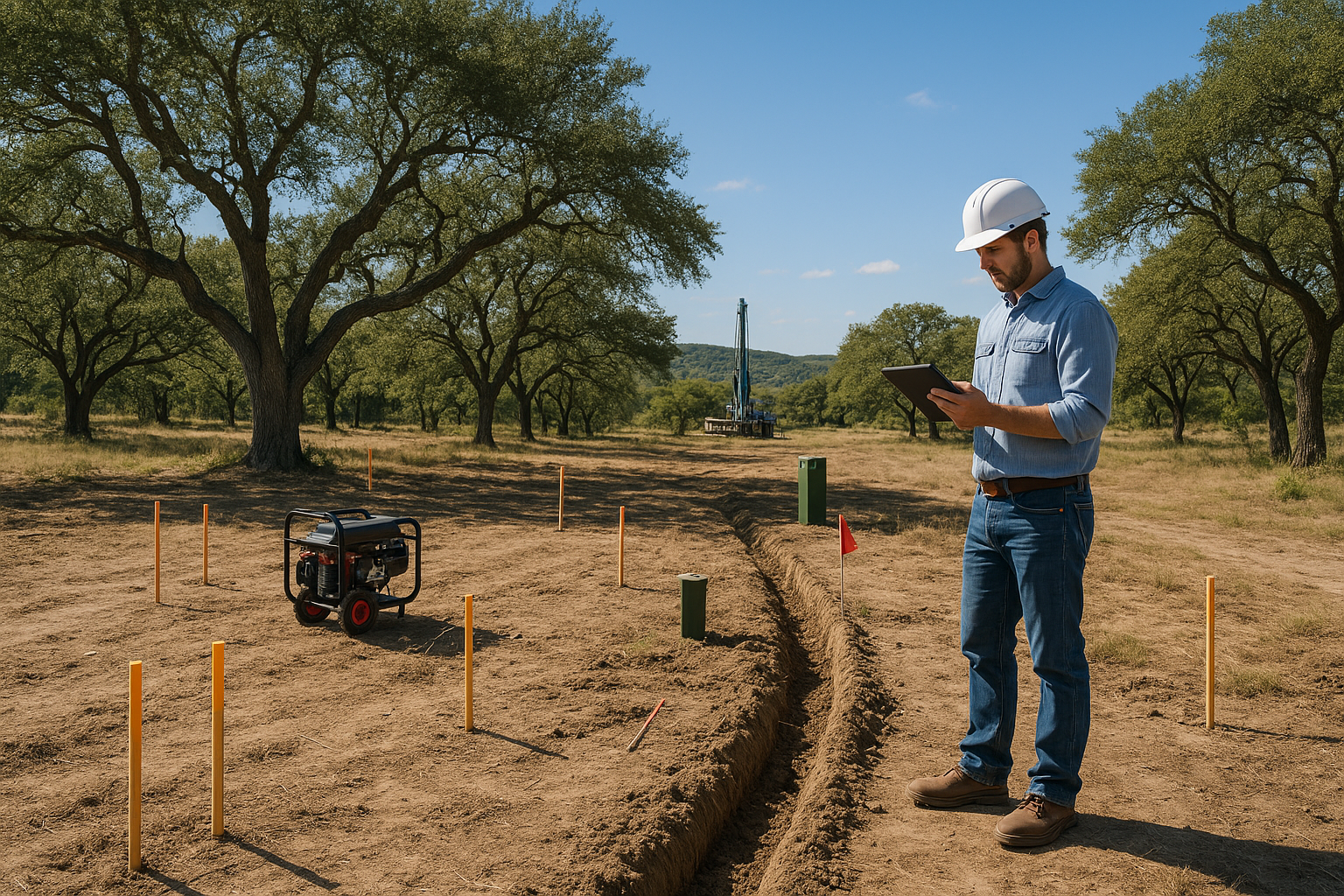Utility Planning for Your Texas Hill Country Homesite


A step-by-step guide to power, water, gas, and internet planning for Texas Hill Country on-your-lot homes.
Power, water, and gas: choosing reliable sources
Power, potable water, and fuel are the backbone of a successful on-your-lot custom build—and in the Texas Hill Country, each requires thoughtful, site-specific planning. Start with electricity. Identify your local provider and their service process early; many Hill Country properties fall under Pedernales Electric Cooperative (PEC), which outlines clear steps for new temporary and permanent service, from design to meter set. Review the sequence and lead times here: PEC new service steps and general construction resources at PEC construction & development. Coordinate your builder’s schedule with the utility’s design and inspection phases so trenching and conduit installation align with foundation and slab timelines. Water planning hinges on whether your lot has access to a municipal system, a community system, or requires a private well. Private wells are common in rural Hill Country locales and are governed by state guidance and local groundwater conservation districts. Study siting and protection basics via the Texas Groundwater Protection Committee: Texas Groundwater Protection Committee water wells and drought-era groundwater rules at TCEQ groundwater regulation for private wells. For new owners, the Texas Water Development Board’s primer is invaluable: TWDB Groundwater and Private Well FAQ and the Texas Well Owner Network Guide to Water Supply (PDF). Your builder and well driller will ensure required setbacks from septic fields, property lines, and waterways are respected, and help plan treatment (e.g., iron, hardness, or sulfur mitigation) if tests warrant it. For fuel, many rural homes choose propane for cooking, fireplaces, and backup heat. Decide early on tank size and placement (above or below ground) and coordinate trench paths for gas lines alongside electrical conduit runs to minimize rework. Where available, natural gas may be preferable, but distances to mains can be cost-prohibitive on large parcels. Finally, consider resilience: specify a transfer switch and generator pad if you want standby power, and confirm your service panel, propane capacity, and ventilation plan support that upgrade. Strategic utility planning—sequenced with surveying, site prep, and foundation—keeps your build moving and your long-term operating costs predictable.
Internet and connectivity for rural Texas properties
Rural connectivity has improved dramatically, but speeds and reliability vary by street. Understand your choices before walls go up so you can pre-wire and position equipment for optimal performance. In the Hill Country, your Internet options typically include: fiber (limited but expanding in certain corridors), fixed wireless (line-of-sight towers), and satellite. Local providers such as HCTC serve portions of the Hill Country with wired and wireless solutions—check availability at HCTC Hill Country internet. If you’re beyond fiber and fixed-wireless zones, satellite (e.g., Hughesnet or Starlink) can bridge the gap; learn about rural satellite options at Hughesnet rural internet overview and see a comparison of Starlink and fixed wireless pros/cons for Texas terrain at Starlink vs fixed wireless in Texas. Plan for reliability. Mesh Wi‑Fi and strategically placed access points ensure strong coverage throughout large, spread-out houses and detached structures. If your home will rely on satellite or fixed wireless, locate the dish or antenna with a clear view (southern sky for many satellites, line-of-sight for towers) and run conduit to accommodate future cable upgrades. Consider a small, ventilated low-voltage closet for the modem, router, UPS battery backup, and structured wiring. Rural Texans still face broadband gaps—see a recent overview at Rural Texans broadband status—so building flexibility into your network infrastructure pays dividends as providers add service. Security and smart controls often depend on consistent connectivity. Prewire for exterior cameras, gate controls, and outbuilding access while trenches are open. Even if you choose cellular fallbacks for alarms, a stable primary connection simplifies video and automation. Coordinate with your builder early to route low-voltage cabling alongside power and gas while maintaining required separations.
Permits, trenching, and budgeting for new service
Every utility touches permitting, trenching, and budget. Build a simple utility plan that layers power, water, gas/propane, sewer or septic, and communications on one site drawing. For power with PEC, note that service design, easements, and inspections have defined steps and timelines; review them at PEC new service steps. For wells, document set-backs, sanitary seal details, and local district filings per TCEQ guidance at TCEQ well requirements. For connectivity, get written confirmations from providers on install lead times and any pole or trench contributions required. Trenching should be sequenced to minimize disturbance: a main trench corridor can carry electrical conduit, low-voltage conduit, and gas (in separate trenches or with required separation and depths), while water lines and septic laterals follow engineered paths. Your budget should include: provider application fees, line extensions or transformers, conduit and wire, trenching/backfill, meter bases and panels, propane tank and regulators, well drilling and casing, pump, pressure tank, treatment, and communications equipment. Add contingency for rock trenching—common in limestone regions—and for long driveways that require deeper utility runs. Finally, keep good records: permits, as-builts, test results, and warranty documents will be invaluable for future service, resale, or insurance. With careful coordination and a utility-first mindset, your Hill Country home will be resilient, efficient, and ready for modern living from day one.
.png?width=400&height=133&name=TRUE%20STONE%20LOGO%20(1).png)